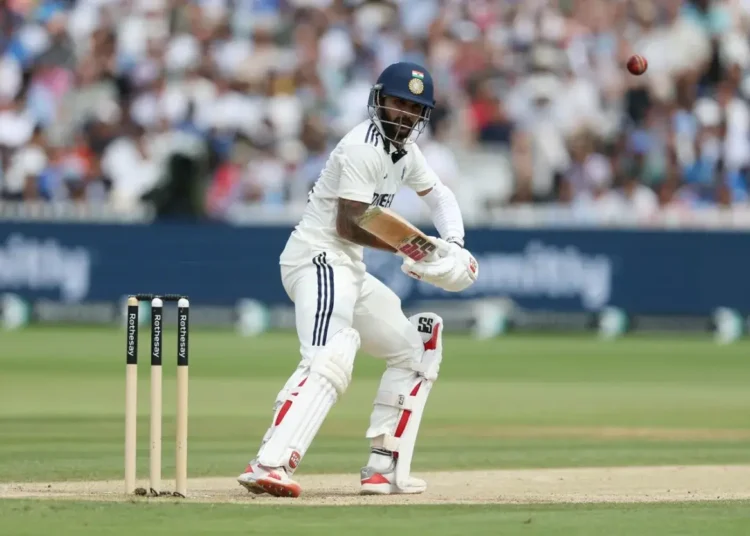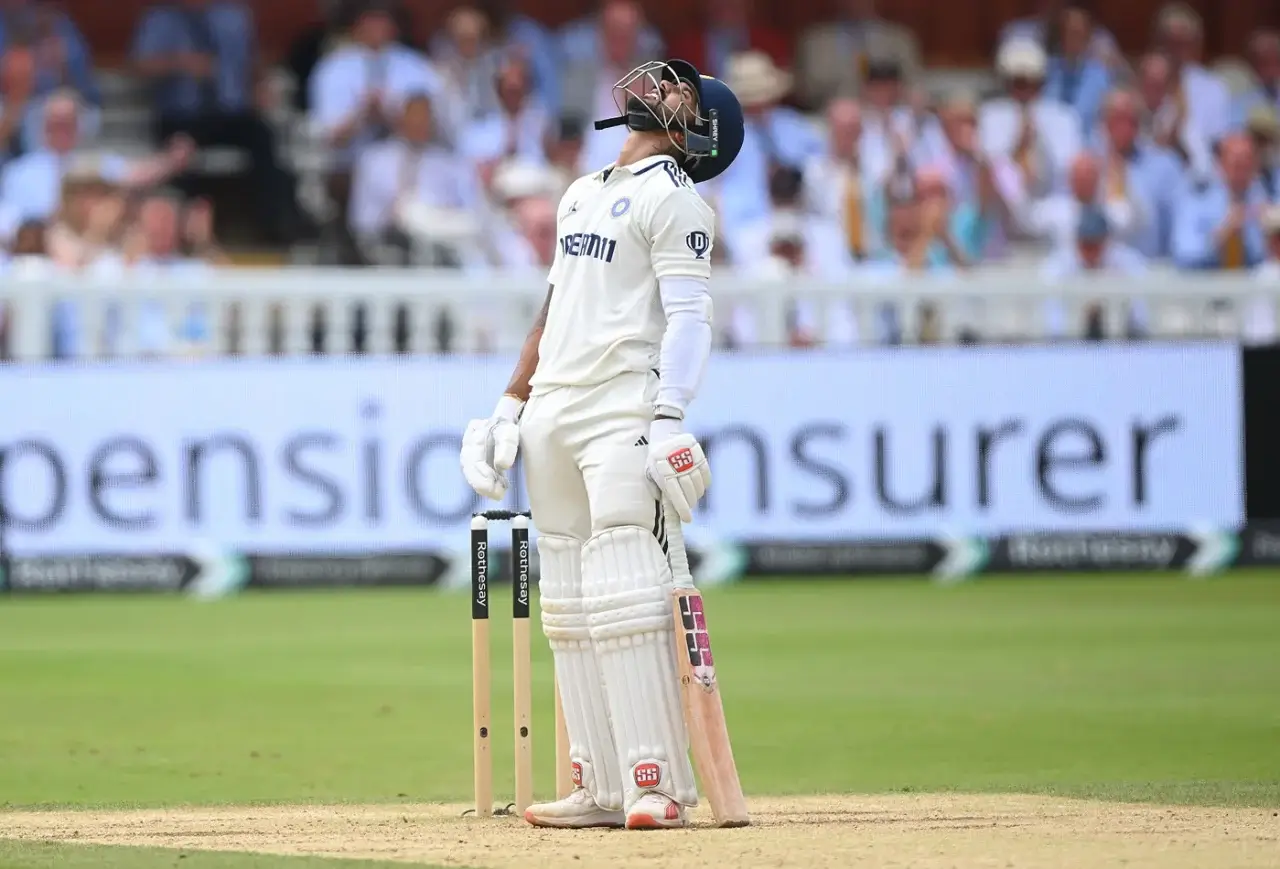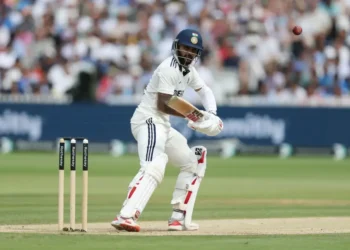Nitish Kumar Reddy’s inclusion in India’s Test squad against the West Indies raised eyebrows. He batted just once and bowled four overs in the entire series. Yet, head coach Gautam Gambhir defended his selection strongly. For him, the purpose went beyond numbers and scorecards.
Reddy represents India’s long-term investment in seam-bowling all-rounders. His selection is about grooming, not just immediate returns. Gambhir believes exposure to home conditions is as vital as overseas learning. He said young players must not only play “tough tours” but also learn rhythm, pressure, and patience at home.
India, under Shubman Gill’s captaincy, used the West Indies Tests to blend experience and youth. Reddy’s promotion to No. 5 in Delhi was deliberate. It was about testing adaptability and temperament in calmer phases of play. His 43-run knock, though short, showcased intent and composure to maintain the timeline.
This article explores Nitish Reddy’s role in India’s team balance, how he fits in with Jadeja and Washington Sundar, and why Gambhir believes his presence matters — even without wickets or long spells.
Why Nitish Reddy’s Selection Makes Sense For India’s Future?
India’s long search for a seam-bowling allrounder continues. Over the years, few players have fit the dual role successfully. Reddy’s inclusion marks a shift in grooming philosophy. Instead of waiting for ready-made stars, the team wants to build one slowly.
The management knows that modern Tests need batting depth and bowling variety. With Ravindra Jadeja and Washington Sundar covering spin duties, India needs a medium-fast option who can bat with control. Reddy fits that mould better than Axar Patel or any reserve batter.
His value lies in flexibility. In Ahmedabad, India didn’t need his overs. In Delhi, he provided balance as a backup seamer and middle-order batter. Though he didn’t bowl in the follow-on innings, his role was to learn from Jasprit Bumrah and Mohammed Siraj. Observing top pacers in home conditions helps him understand rhythm and pitch management.
Gambhir explained that experience doesn’t always mean bowling 15 overs. Sometimes, it means just being part of the strategy. For a 23-year-old, this exposure is crucial. India gains a more versatile squad, and Reddy learns the demands of Test cricket firsthand.
How India Views Seam-Bowling Allrounders?
India’s last major seam all-rounder was Hardik Pandya, but injuries limited his red-ball role. Reddy fills that gap gradually. The idea is to have an option who can provide a few overs without breaking rhythm and offer 40-50 runs regularly.
India’s team management wants this category filled permanently. The modern Test team cannot rely only on two pacers for 200 overs. Reddy’s presence acts as both depth and insurance. This balance also helps selectors avoid overbowling Bumrah or Siraj in home matches.
Reddy’s Learning Curve: Why Experience Matters More Than Overs
At first glance, Reddy’s four overs and one innings look insignificant. But Test exposure is not about raw numbers. It’s about understanding tempo, decision-making, and adapting to match pressure.
During the Delhi Test, Reddy watched senior players adjust to slow, lifeless conditions. He learned when to attack, when to hold back, and how to build patience — key Test skills. For a seam-bowling allrounder, this mental learning matters as much as physical workload.
Gambhir noted that India doesn’t want Reddy to only play abroad. “That’s not fair to him,” he said. He wants Reddy to learn how to bowl with the SG ball, deal with hot conditions, and read slow surfaces.
India’s goal is continuity. Reddy’s participation gives them a future-ready backup for away tours. He’s not being measured by wickets today, but by how much smarter he becomes in 12 months.
The Allrounder Hierarchy in Indian Cricket
India currently has three active Test allrounders: Jadeja, Washington Sundar, and Reddy. Jadeja leads the list as a complete match-winner. Washington, after his successful England tour, provides reliable batting and off-spin depth. Reddy comes next — young, raw, and promising.
Unlike Washington, Reddy’s strength lies in medium-fast bowling. His batting, though improving, still needs refinement against late movement. Coaches are aware of his open-shouldered technique against swing. But they also admire his intent and front-foot game.
His 43 in Delhi, scored at a brisk pace, proved his willingness to learn and adapt. For Gambhir, that attitude counts more than technical flaws at this stage.
How Reddy Strengthens India’s Team Combination?
Reddy’s presence in the XI changes team dynamics quietly. With him, India can extend their batting lineup to No. 8 without losing bowling options. This structure lets India play five bowlers and still post big totals.
In the West Indies series, India didn’t need him to deliver breakthroughs. But his availability gave the captain flexibility — an insurance policy if conditions changed suddenly. For instance, had the Delhi pitch cracked earlier, Reddy could have stepped in as a seam option.
He also helps the team rest bowlers strategically. Having a backup seamer in the side gives Gill room to rotate Bumrah and Siraj smartly. In longer series, this helps prevent burnout and long injury spells.
Moreover, India’s Test approach is now layered. Gambhir’s staff values exposure over short-term stats. The idea is to build role clarity rather than create short-lived performers.
Why India Chose Reddy Over Padikkal or Axar?
Critics argued that Devdutt Padikkal or Axar Patel might have contributed more. But the choice of Reddy was strategic, not sentimental. India already had batting cover and three quality spinners. Playing Reddy provided a seam-bowling dimension and extra batting at No. 8.
In India, seamers bowl less. But the exposure still matters for future tours to South Africa and England. Padikkal might have scored runs, but wouldn’t offer bowling flexibility. Reddy, even unused, adds tactical depth and learning potential. His selection shows India’s shift toward future planning, not reactive team building.
India’s Long-Term Plan With Reddy
The Indian management views Reddy as a project player. They plan to give him limited but consistent exposure across home and away matches. He may not bowl much in Indian conditions, but he learns positioning, preparation, and patience.
Gambhir’s approach echoes the team’s broader development philosophy. India now uses Test cricket exposure as part of grooming. That’s why the coach insists on Reddy’s inclusion even when he’s underused. Watching senior pacers operate, learning from match rhythm, and adapting to captaincy demands — all these are hidden lessons that don’t appear on scorecards.
The long-term goal is clear: by 2027, India wants a complete seam allrounder capable of batting in the top seven and bowling 10-15 overs per innings. Reddy is being shaped for that role quietly but steadily.
From Australia to Delhi: A Glimpse of Reddy’s Evolution
Reddy’s hundred at the MCG in 2024 remains a defining career moment. That innings under pressure showed resilience and skill against a full-strength Australian attack. His confidence since then has grown, even when runs are limited.
In Delhi, he looked composed at No. 5. He used his feet well, handled spin positively, and showed good match awareness. His game against pace still needs polish, but that will come with more matches. India’s staff believes in giving such players space to grow, not instant judgment.
Conclusion
Nitish Kumar Reddy’s current role may look limited on paper, but its value is long-term. He’s India’s bridge between bowling balance and batting depth. Gambhir’s faith in him reflects India’s maturity as a Test side — patient, strategic, and forward-looking.
Reddy is learning from Bumrah, Siraj, and Jadeja every day. That mentorship is priceless. Even if he bowls just a few overs now, the lessons will define his Test career later. India gains a backup allrounder, a flexible squad option, and a young cricketer being shaped for overseas success.
In many ways, Reddy represents the future of India’s Test evolution. A player built through planning, not pressure. His current experience will pay dividends when India faces tougher, faster conditions abroad.















